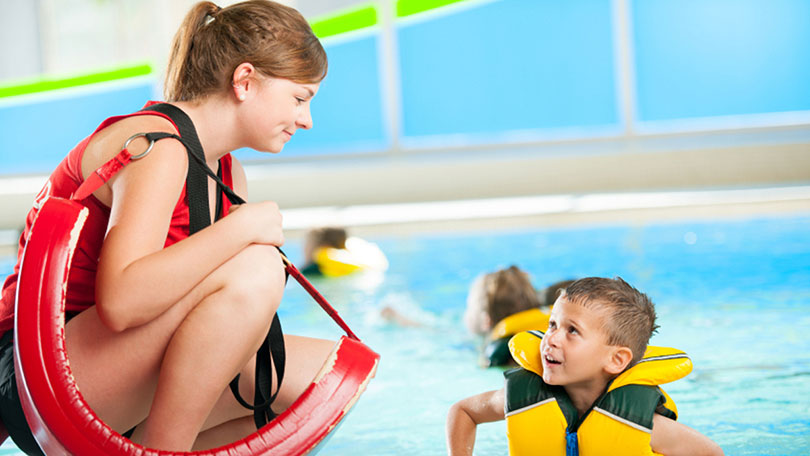Lifeguards are entrusted with a tremendous responsibility: safeguarding lives at pools, beaches, and water parks. To remain effective in their roles, they must consistently update their knowledge and skills. Lifeguard recertification is a critical aspect of this process, ensuring that lifeguards stay well-prepared to handle emergencies. In this article, we’ll delve into the importance of lifeguard recertification, what the process entails, and why the American Lifeguard Association (ALA) offers one of the best programs for maintaining and refreshing lifesaving skills.
Understanding Lifeguard Recertification
Lifeguard certification is not a one-time achievement. Lifeguards must regularly renew their credentials to ensure they meet current standards and protocols. Most lifeguard certifications are valid for two years, after which lifeguards must complete a recertification course. This process is not just a formality; it plays a vital role in keeping lifeguards sharp and ready to respond to any emergency.
Lifeguard Recertification involves reviewing key lifesaving skills, including water rescues, CPR, AED usage, and first aid. It also includes updates on the latest safety protocols, ensuring that lifeguards are aware of any changes in standards or techniques. This ensures that lifeguards stay in top form, both mentally and physically, and are capable of managing high-stress situations effectively.
Why Is Lifeguard Recertification Important?
1. Lifesaving Techniques Evolve
Over time, the understanding of best practices in lifesaving evolves. New research, technological advances, and real-world experiences lead to updates in the methods and equipment used in emergency responses. Recertification allows lifeguards to stay informed of these changes. For example, advancements in CPR techniques or AED device technology can dramatically improve the chances of survival during cardiac emergencies. Staying current with these techniques ensures that lifeguards provide the best possible care in critical situations.
2. Physical and Mental Preparedness
Lifeguard duties require physical fitness and mental sharpness. Lifeguard recertification ensures that lifeguards can still meet the physical requirements of their jobs, including swimming proficiency, endurance, and the strength needed for rescues. Mental preparedness is just as crucial; the ability to stay calm under pressure, make quick decisions, and follow emergency protocols requires ongoing practice and training.
3. Legal Compliance
Many states and employers require lifeguards to maintain current certification as part of legal and regulatory requirements. Lifeguards who allow their certifications to lapse risk not only their job security but also legal liability in case of an incident. By ensuring their certifications remain up to date, lifeguards protect themselves and their employers from potential legal issues.
4. Confidence in Crisis
When faced with an emergency, confidence can be the difference between a successful rescue and a tragedy. Lifeguards who have gone through recent recertification are more likely to feel confident in their abilities and decisions. This confidence allows them to act quickly and decisively, providing better outcomes in high-pressure situations.
The Lifeguard Recertification Process
Recertification is generally quicker than the original certification process, as it is designed to refresh existing knowledge rather than teach new lifeguards. Here’s what the typical recertification process involves:
1. Eligibility
Lifeguards must hold a current certification that has not expired for more than a specific period (usually 30 days) to qualify for recertification. If the certification has lapsed beyond this grace period, lifeguards may be required to complete the full certification course again.
2. Course Structure
Recertification courses typically involve a combination of classroom instruction and practical exercises. Topics include CPR, first aid, and AED use, as well as water rescue techniques. The course aims to assess whether lifeguards can still perform these skills effectively and to refresh their knowledge of any updates to lifeguarding procedures.
3. Testing
At the end of the course, lifeguards must pass written and practical tests to demonstrate their competence. The practical exam involves simulated rescues, CPR, and other emergency procedures. Instructors evaluate each participant’s ability to react to emergency scenarios quickly and efficiently.
4. Certification Renewal
Upon successful completion of the course, lifeguards receive a renewed certification, valid for another two years. Lifeguards must keep track of their certification’s expiration date and schedule their recertification course before it lapses.
The Best Lifeguard Recertification Program: The American Lifeguard Association (ALA)
When it comes to choosing a lifeguard recertification course, the American Lifeguard Association (ALA) stands out as a leader in the field. Here’s why:
1. Comprehensive Curriculum
The ALA’s recertification courses are designed to cover all aspects of lifeguarding, from water rescues to advanced emergency procedures like CPR and AED use. Their curriculum is constantly updated to reflect the latest standards from the American Heart Association (AHA) and the American Red Cross, ensuring that participants receive the most current and comprehensive training available.
2. Flexibility and Convenience
ALA offers recertification programs in a variety of formats, including in-person, blended (combination of online and in-person), and online-only options. This flexibility makes it easy for busy lifeguards to fit recertification into their schedules. The ability to complete portions of the training online also allows for greater convenience and faster completion.
3. Nationwide Availability
One of the best aspects of the ALA’s program is its availability across the United States. No matter where you are located, you can find a recertification course near you. The ALA works with a network of certified instructors and facilities to ensure that lifeguards have access to high-quality recertification courses wherever they live or work.
4. Focus on Real-World Scenarios
The ALA places a strong emphasis on preparing lifeguards for real-world emergencies. Their courses are designed to replicate the pressures and challenges lifeguards face in actual water-rescue situations. By training in environments that mimic these real-life scenarios, participants gain invaluable experience and confidence that helps them perform better in actual emergencies.
5. Affordable and Accessible
Affordability is another reason why ALA is a top choice for lifeguard recertification. They offer competitive pricing, and their nationwide presence means participants don’t have to travel far to attend a course. For employers or organizations needing to recertify multiple lifeguards, the ALA also provides group training discounts.
Conclusion
Lifeguard recertification is not just a requirement—it is a vital part of ensuring the safety of both lifeguards and the public. By staying current on lifesaving techniques, physical fitness, and emergency protocols, lifeguards can confidently fulfill their roles and continue to protect lives. The American Lifeguard Association offers one of the best recertification programs available, combining flexibility, affordability, and high-quality training to ensure lifeguards are prepared for any emergency. Whether you’re a seasoned lifeguard or just starting your career, recertifying with the ALA will keep you on the path of professional excellence.







